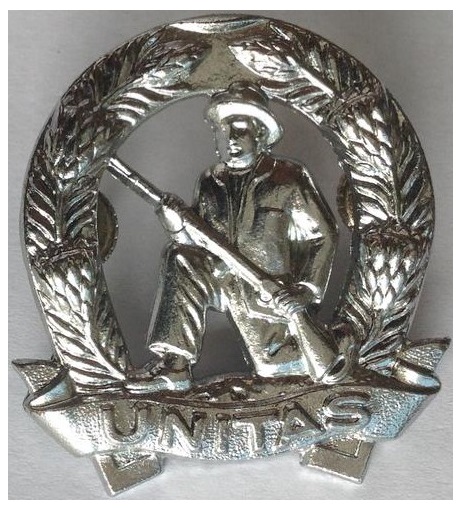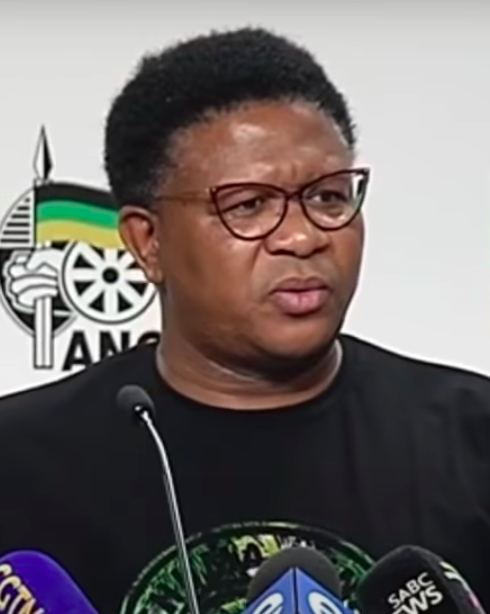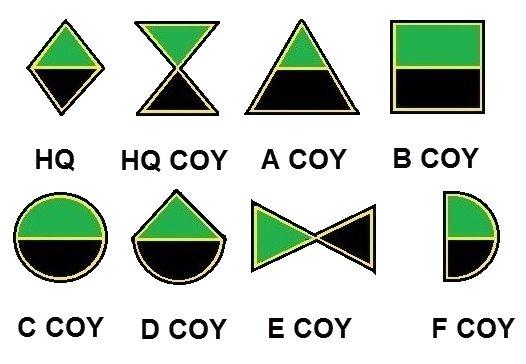 |
Modderfontein Commando
The Modderfontein Commando was a light infantry unit of the South African Army. It formed part of the South African Infantry Corps, South African Army Infantry Formation as well as the South African Territorial Reserve under the Commando System (South Africa), Commando System. It was phased out in 2003-2008 along with the rest of the commando system due to its role in Apartheid. History Origin The Modderfontein Commando was tasked with the protection of the Modderfontein Dynamite Factory, South Africa's biggest manufacturer of explosives. Operations Within the South African Defence Force (SADF) In 1969, the Modderfontein Dynamite Factory was placed under the protection of the Republic Defence Force (South African Defence Force, SADF). Before then, the factory was protected by a unit of the National Volunteer Battalion (NVB) that was made up of "keymen" and other volunteers. In 1946 the units were retired. The Modderfontein Commando was initially formed as an urban commando u ... [...More Info...] [...Related Items...] OR: [Wikipedia] [Google] [Baidu] |
 |
Infantry
Infantry, or infantryman are a type of soldier who specialize in ground combat, typically fighting dismounted. Historically the term was used to describe foot soldiers, i.e. those who march and fight on foot. In modern usage, the term broadly encompasses a wide variety of subspecialties, including light infantry, irregular infantry, heavy infantry, mountain infantry, motorized infantry, mechanized infantry, Airborne forces, airborne infantry, Air assault, air assault infantry, and Marines, naval infantry. Other subtypes of infantry, such as line infantry and mounted infantry, were once commonplace but fell out of favor in the 1800s with the invention of more accurate and powerful weapons. Etymology and terminology In English, use of the term ''infantry'' began about the 1570s, describing soldiers who march and fight on foot. The word derives from Middle French , from older Italian (also Spanish) ''infanteria'' (foot soldiers too inexperienced for cavalry), from Latin '' ... [...More Info...] [...Related Items...] OR: [Wikipedia] [Google] [Baidu] |
 |
South African Commando System
The Commando System was a mostly voluntary, part-time force of the South African Army, but in their role as local militia the units were often deployed in support of and under the authority of the South African Police. Mission South Africa's Commando System was responsible for the safeguarding and protection of specific communities (usually rural, but sometimes urban). Commando units were usually referred to as area protection, a Civil defense, civil defence system which involved the whole community. The participants in the Commando System did not have military commitments outside of the areas they served and were responsible for the safety and security of their own communities. History Origin The Commando system existed from the 1770s. The early Boer Commando system was a Conscription, conscriptive service designed to provide a quickly-trained fighting force. Commandos were a product of the First Boer War during which the fiercely independent Boers had no regular army. When ... [...More Info...] [...Related Items...] OR: [Wikipedia] [Google] [Baidu] |
 |
Infantry Regiments Of South Africa
Infantry, or infantryman are a type of soldier who specialize in ground combat, typically fighting dismounted. Historically the term was used to describe foot soldiers, i.e. those who march and fight on foot. In modern usage, the term broadly encompasses a wide variety of subspecialties, including light infantry, irregular infantry, heavy infantry, mountain infantry, motorized infantry, mechanized infantry, airborne infantry, air assault infantry, and naval infantry. Other subtypes of infantry, such as line infantry and mounted infantry, were once commonplace but fell out of favor in the 1800s with the invention of more accurate and powerful weapons. Etymology and terminology In English, use of the term ''infantry'' began about the 1570s, describing soldiers who march and fight on foot. The word derives from Middle French , from older Italian (also Spanish) ''infanteria'' (foot soldiers too inexperienced for cavalry), from Latin '' īnfāns'' (without speech, newborn, ... [...More Info...] [...Related Items...] OR: [Wikipedia] [Google] [Baidu] |
 |
SADF Era Modderfontein Industrial Commando Insignia
The South African Defence Force (SADF) (Afrikaans: ''Suid-Afrikaanse Weermag'') comprised the armed forces of South Africa from 1957 until 1994. Shortly before the state reconstituted itself as a republic in 1961, the former Union Defence Force was officially succeeded by the SADF, which was established by the Defence Act (No. 44) of 1957. The SADF, in turn, was superseded by the South African National Defence Force in 1994. Mission and structure The SADF was organised to perform a dual mission: to counter possible insurgency in all forms, and to maintain a conventional military arm which could defend the republic's borders, making retaliatory strikes as necessary. As the military expanded during the 1970s, the SADF general staff was organised into six sections—finance, intelligence, logistics, operations, personnel, and planning; uniquely, the South African Medical Service (SAMS) was made co-equal with the South African Army, the South African Navy and the South African A ... [...More Info...] [...Related Items...] OR: [Wikipedia] [Google] [Baidu] |
|
Charles Nqakula
Charles Nqakula (born 13 September 1942) is a South African politician who served as Minister of Defence from September 2008 to 2009. He also served as Minister for Safety and Security from May 2002 to September 2008. Nqakula is married to the former Speaker of the National Assembly of South Africa, Nosiviwe Mapisa-Nqakula On 24 June 2012, Former South African President Jacob Zuma appointed Nqakula as High Commissioner to the Republic of Mozambique, a position he still retains today. Early life Charles Nqakula attended primary school in Cradock and secondary school in Lovedale, matriculating in 1963. He worked as a hotel waiter and wine steward, after which he became a clerk in the Department of Bantu Education. Journalism In 1966, Nqakula started as a journalist with the ''Midland News'', a regional weekly newspaper in Cradock. Seven years later, he became a political reporter with ''Imvo Zabantsundu'' in King William's Town. From 1976 he worked for the Daily Dispatch in ... [...More Info...] [...Related Items...] OR: [Wikipedia] [Google] [Baidu] |
|
 |
Minister Of Police (South Africa)
The minister of police is the minister in the Cabinet of South Africa with political responsibility for the Department of Police, including the South African Police Service, the Independent Police Investigative Directorate, the Private Security industry Regulatory Authority, and the Civilian Secretariat for Police. The office was called the minister of safety and security between 1994 and 2009, and before that it was the minister of law and order. Ministers References External links South African Police ServiceIndependent Police Investigative DirectorateCivilian Secretariat for PolicePrivate Security Industry Regulatory Authority {{SouthAfrica-gov-stub Police The police are Law enforcement organization, a constituted body of Law enforcement officer, people empowered by a State (polity), state with the aim of Law enforcement, enforcing the law and protecting the Public order policing, public order ... Law enforcement in South Africa ... [...More Info...] [...Related Items...] OR: [Wikipedia] [Google] [Baidu] |
 |
Thabo Mbeki
Thabo Mvuyelwa Mbeki (; born 18 June 1942) is a South African politician who served as the 2nd democratic president of South Africa from 14 June 1999 to 24 September 2008, when he resigned at the request of his party, the African National Congress (ANC). Before that, he was Deputy President of South Africa, deputy president under Nelson Mandela from 1994 to 1999. The son of Govan Mbeki, an ANC intellectual, Mbeki has been involved in ANC politics since 1956, when he joined the African National Congress Youth League, ANC Youth League, and has been a member of the party's National Executive Committee of the African National Congress, National Executive Committee since 1975. Born in the Transkei, he left South Africa aged twenty to attend university in England, and spent almost three decades in exile abroad, until the ANC was unbanned in 1990. He rose through the organisation in its information and publicity section and as Oliver Tambo's protégé, but he was also an experienced d ... [...More Info...] [...Related Items...] OR: [Wikipedia] [Google] [Baidu] |
 |
President Of South Africa
The president of South Africa is the head of state and head of government of the Republic of South Africa. The president directs the executive branch of the government and is the commander-in-chief of the South African National Defence Force. Between 1961 and 1994, the office of head of state was the state presidency. The president is elected by the National Assembly, the lower house of Parliament, and is usually the leader of the largest party, which has been the African National Congress since the first multiracial election was held on 27 April 1994. The Constitution limits the president's time in office to two five-year terms. The first president to be elected under the new constitution was Nelson Mandela. The incumbent is Cyril Ramaphosa, who was elected by the National Assembly on 15 February 2018 following the resignation of Jacob Zuma. Under the interim constitution (valid from 1994–96), there was a Government of National Unity, in which a member of Parliament ... [...More Info...] [...Related Items...] OR: [Wikipedia] [Google] [Baidu] |
|
AECI
Aeci (or Aetius) (died 1010), Bishop of Barcelona from 995, was a warrior-prelate in the age of the Peace and Truce of God. Besides military endeavours, mainly ''reconquista'' (the re-conquest of Islamic territory), his episcopate was taken up with the repopulation of the Penedès in the south of the diocese, on the frontier with al-Andalus.Adam J. Kosto (2001), ''Making Agreements in Medieval Catalonia: Power, Order, and the Written Word, 1000–1200'' (Cambridge: Cambridge University Press), 178–82. In 997 Aeci, as bishop, received a conditional gift from one Sendred Donús of land at La Boadella and a garden in the ''burgus'' (suburbs) of Barcelona. Among Sendred's several stipulations for the bishop was that the ''sacriscrinius'' ( churchwarden) Bonfill and his successors should not be removed from that post. In the church's cartulary, the ''Libri antiquitatum'', the scribe has called this document a ''conveniencia'' (agreement), the earliest use of that spelling, which has ... [...More Info...] [...Related Items...] OR: [Wikipedia] [Google] [Baidu] |
|
 |
South African Infantry Corps
The South African Army Infantry Formation supervises all infantry within the South African Army. History Origins: Union Defence Force South African Infantry originated as the ''Infantry Branch'' of the Union Defence Force (South Africa), Union Defence Forces in 1913. In 1915, the defence forces established the South African Overseas Expeditionary Force for war service outside Southern Africa. It included the ''South African Infantry'', comprising twelve battalions, and the ''Cape Corps'', comprising two battalions of Coloureds, Coloured volunteers. These units were disbanded in 1919. The Infantry Branch was enlarged in 1934, and the mounted rifles regiments were converted to infantry in 1935. In 1943, the Infantry Branch was incorporated into the new South African Armoured Corps, which was divided into armour and infantry branches after World War II. Republic Defence Force (SADF) Separated by language Based on the findings of a committee led by Brigadier H.B. Popper in ... [...More Info...] [...Related Items...] OR: [Wikipedia] [Google] [Baidu] |
|
South African Defence Force
The South African Defence Force (SADF) (Afrikaans: ''Suid-Afrikaanse Weermag'') comprised the armed forces of South Africa from 1957 until 1994. Shortly before the state reconstituted itself as a republic in 1961, the former Union Defence Force was officially succeeded by the SADF, which was established by the Defence Act (No. 44) of 1957. The SADF, in turn, was superseded by the South African National Defence Force in 1994. Mission and structure The SADF was organised to perform a dual mission: to counter possible insurgency in all forms, and to maintain a conventional military arm which could defend the republic's borders, making retaliatory strikes as necessary. As the military expanded during the 1970s, the SADF general staff was organised into six sections—finance, intelligence, logistics, operations, personnel, and planning; uniquely, the South African Medical Service (SAMS) was made co-equal with the South African Army, the South African Navy and the South Africa ... [...More Info...] [...Related Items...] OR: [Wikipedia] [Google] [Baidu] |